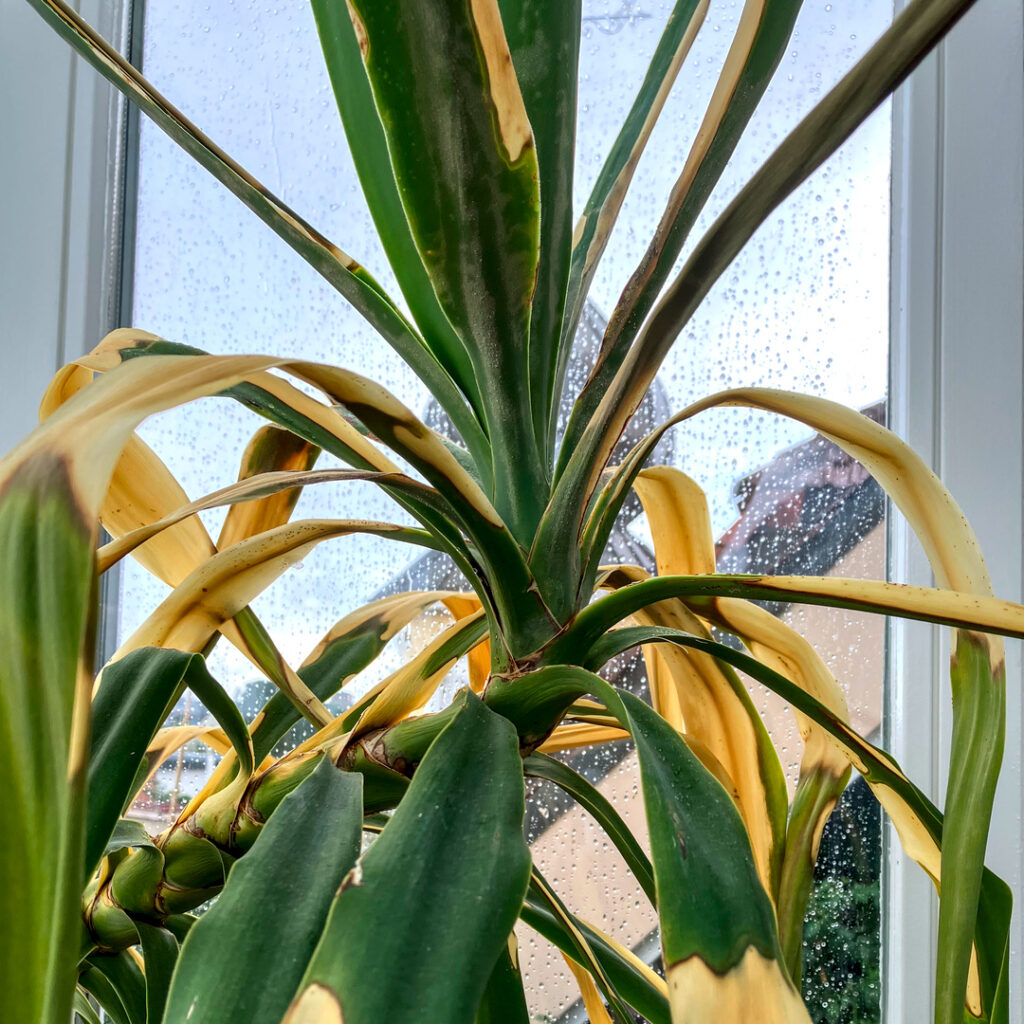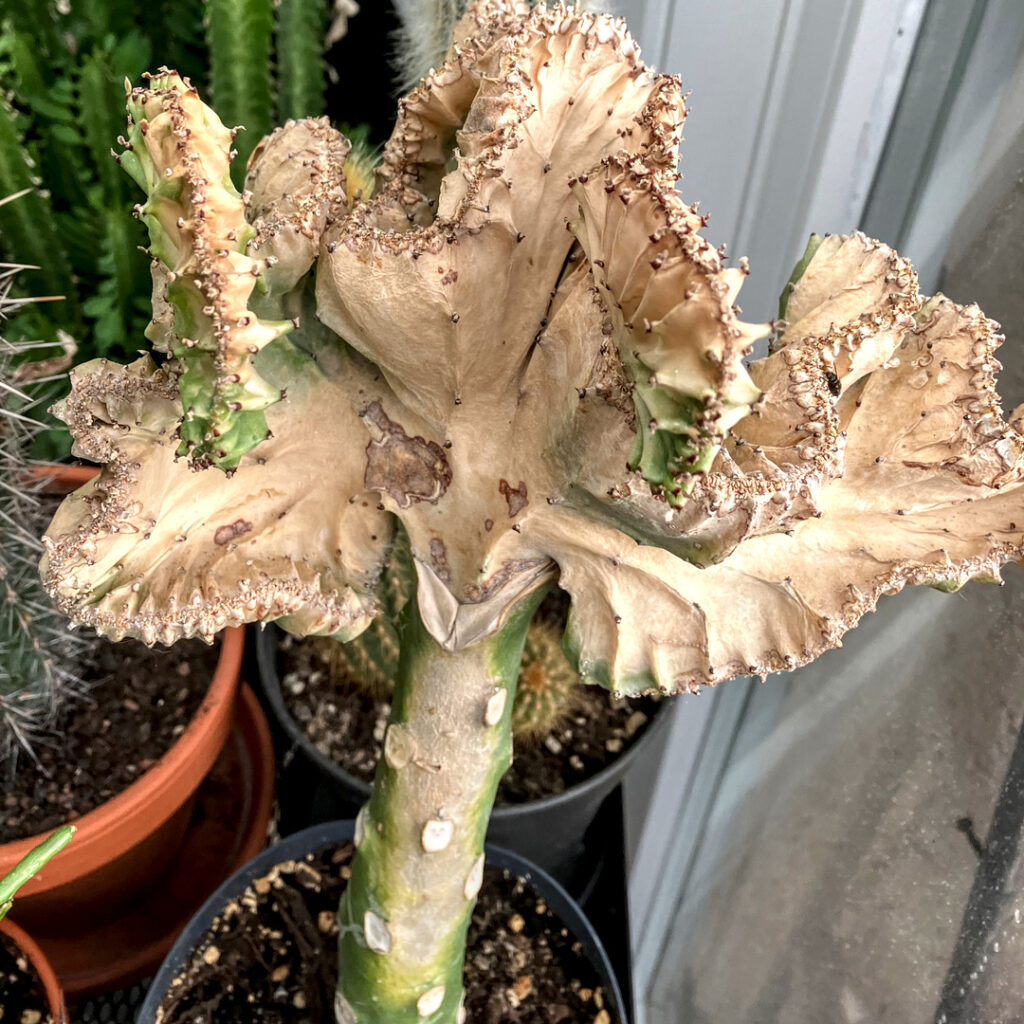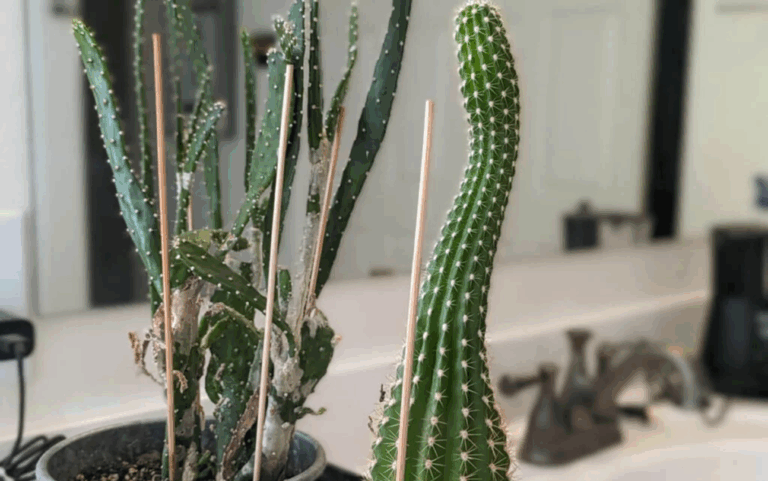
Light is super important for plants. Of course! But sometimes, too much of a good thing can be harmful. Your plants can’t directly tell you that they’re getting too much sun, so you have to watch for their subtle hints. Here are some signs that could indicate that your plant is getting too much light:
1. Withered or burnt leaves
If your plant’s leaves have brown or yellow spots that look like burns, it could be a sign of too much light. These spots occur when the plant is literally being grilled.

2. Faded or discolored leaves
Changes in leaf color can also indicate too much light. If the leaves become lighter than usual or lose their color, it could be an alarm signal.

3. Dry soil despite frequent watering
A plant that constantly has dry soil despite regular watering may be receiving too much light. The intense light can cause the plant to evaporate more water than usual.
4. Stunted growth
If your plant isn’t growing as expected, even though it’s receiving sufficient water and nutrients, too much light could be the reason. Some plants are more sensitive to intense light and can wither under it.
What can you do?
If you think your plant is getting too much light, try moving it to a slightly shadier location. You can also use curtains or blinds to filter the light. Remember that every plant has different light requirements, so it’s important to consider the needs of your specific plant.
Your plants are like silent roommates who react attentively to their surroundings. By paying attention to the signs they give you, you can ensure that they are always in the best condition.
Need help?
If you are unsure whether your plant is getting too much or too little light, simply use our Beam. The Beam not only measures the light intensity, but also the amount of daylight and can tell you exactly whether your plant is getting enough light. Not ready to buy one yet? No problem. Simply download the free FYTA app and use the image-based health check. This can help you with the diagnosis.





1 thought on “4 Telltale Signs That Your Plant Is Getting Too Much Light”